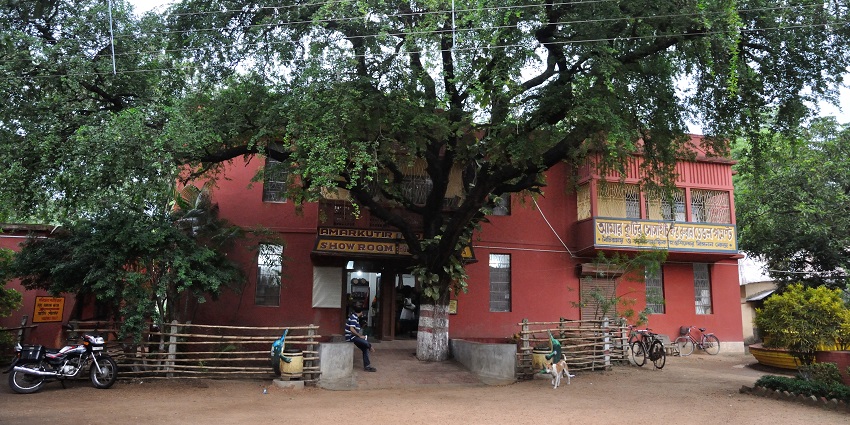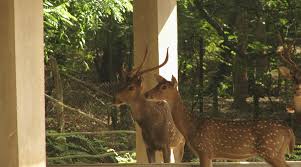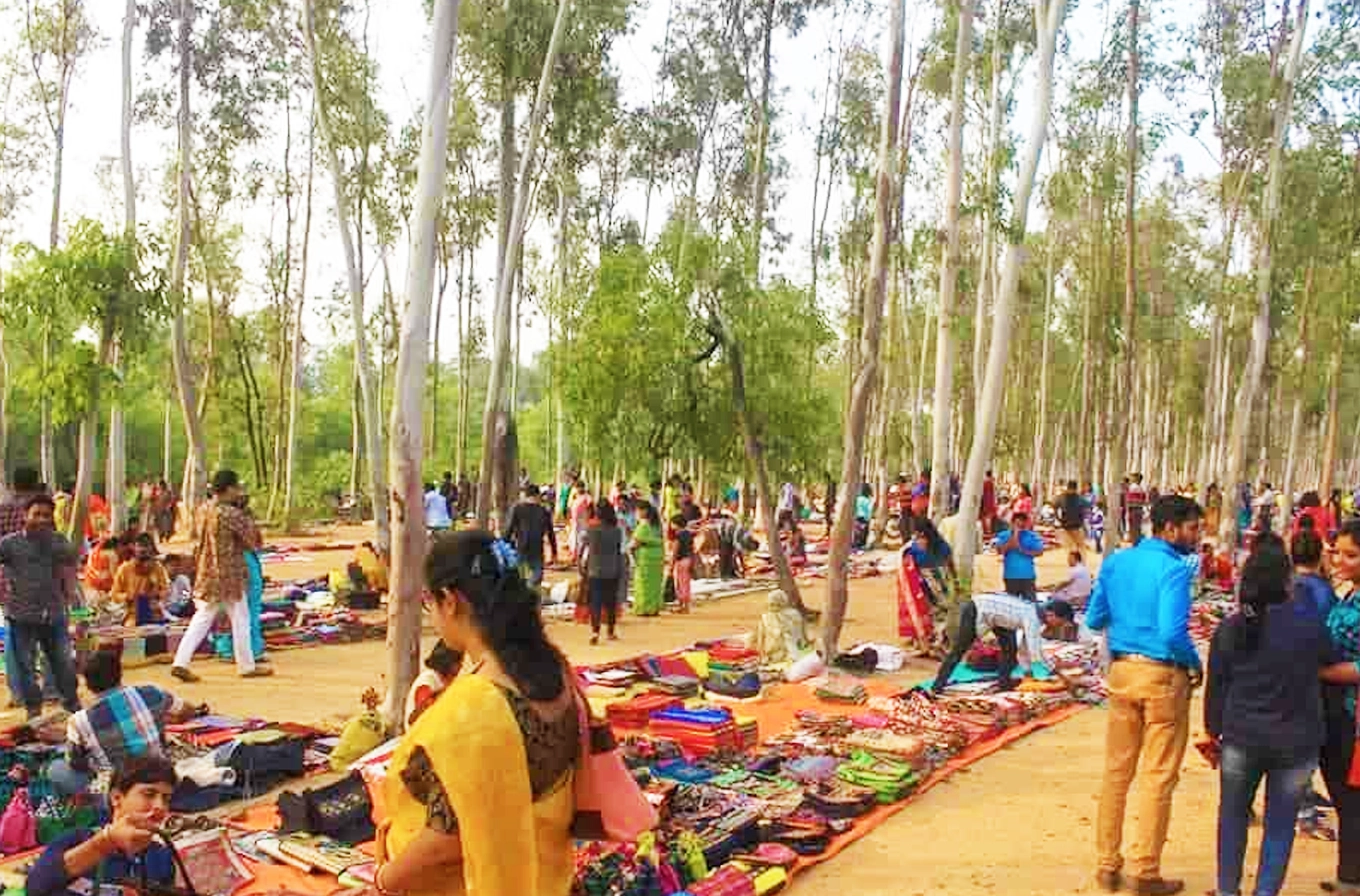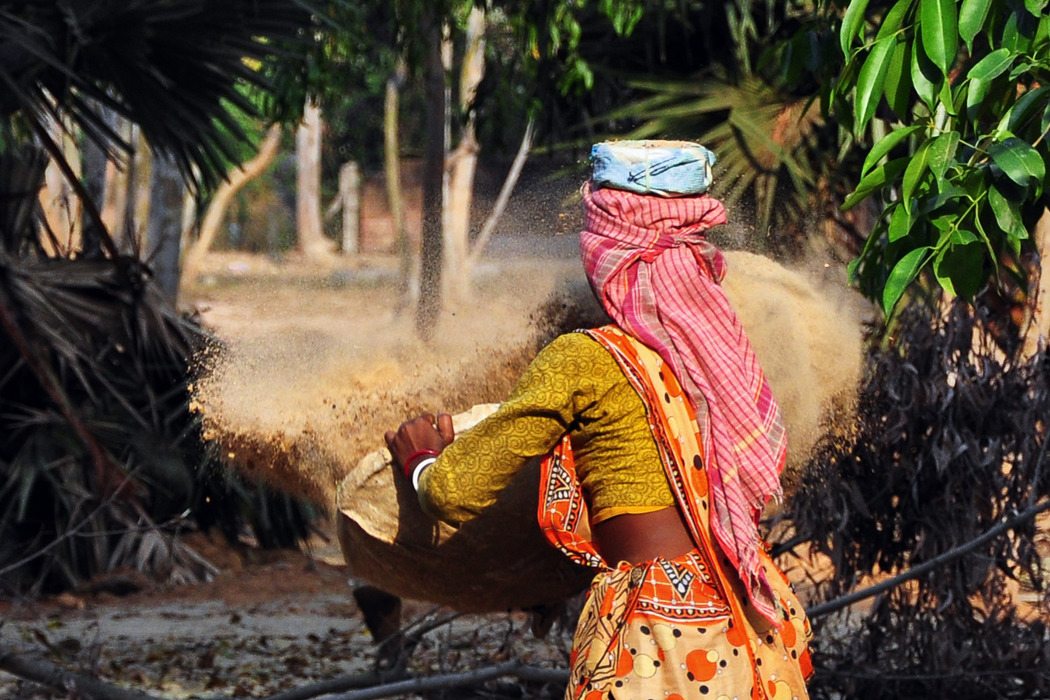Ballavpur Wildlife Sanctuary – Nature, Culture, and Heritage in Harmony
1. The story of Ballavpur Wildlife Sanctuary
Located just 3 km from Visva-Bharati University, Ballavpur Wildlife Sanctuary—locally known as Deer Park—is one of the most scenic and peaceful places in Santiniketan. Established in 1977, this protected area was originally created to conserve the natural ecosystem of spotted deer, peacocks, and various species of migratory birds that flock here each winter. Spread across nearly 200 hectares of sal forests, water bodies, and grasslands, the sanctuary serves as a lush green lung for Bolpur and its surrounding areas.
What makes Ballavpur truly special is its deep connection with Rabindranath Tagore’s vision for Santiniketan — a place where nature, education, and art coexist in perfect harmony. As you walk through the quiet trails, you’ll hear the songs of birds mingling with the distant tunes of Baul singers from nearby villages, capturing the very spirit of Bengal’s cultural soul. The sanctuary stands as a living embodiment of Tagore’s belief that learning and creativity flourish best when rooted in nature.
Today, Ballavpur Wildlife Sanctuary is a favorite destination for nature lovers, photographers, students, and travelers. It’s an ideal escape for anyone seeking calm amidst greenery — a refreshing break from the bustling Sonajhuri Haat or the busy lanes near Kala Bhavana.
2. Flora and Fauna – A living canvas of biodiversity
The sanctuary’s landscape is dominated by towering sal trees, along with piyal, mahua, and eucalyptus. The shallow lakes inside attract a wide variety of resident and migratory birds such as herons, kingfishers, cormorants, and storks. Early morning walks often reveal playful groups of spotted deer grazing near the water, while peacocks spread their vibrant feathers under the golden light.
The ecosystem here also supports jackals, foxes, monitor lizards, and a variety of butterflies — making it a paradise for wildlife photographers and eco-tourists. Each season brings a new rhythm to the sanctuary — from the lush green of monsoons to the soft golden hues of winter.
3. What to see and do
- Deer & Bird Watching: Observe herds of graceful deer, colorful peacocks, and migratory birds like herons and egrets, especially during sunrise or sunset.
- Nature Trails: Take a peaceful walk beneath the shady sal trees, listening to birdsong and rustling leaves — a meditative experience unique to Santiniketan.
- Photography: Perfect for landscape, wildlife, and portrait shots — especially near the lakes and forest clearings.
- Cultural Immersion: After your sanctuary visit, enjoy Baul performances or explore Amar Kutir and Sonajhuri Haat for local crafts and folk art.
- Educational Visits: A great spot for school or college trips focusing on biodiversity, ecology, and sustainable living.
4. History and local legends
Locals often refer to the area as “Ballavpur Bon” — the forest of Ballavpur — which was once part of the expansive woodlands surrounding the ashram founded by Rabindranath Tagore. Over time, as Santiniketan evolved into a center of art and education, Ballavpur remained its natural sanctuary. Many residents believe the serene forest inspired Tagore’s poems and songs about the beauty of Bengal’s seasons and wildlife.
5. When to visit
The best time to visit Ballavpur Wildlife Sanctuary is between October and February. The cool weather, blooming flora, and arrival of migratory birds make this period truly magical. Entry is usually open from 7 AM to 5 PM. Early morning or late afternoon visits are best for spotting wildlife and enjoying the golden light filtering through the forest.
6. Getting there
The sanctuary is just 3 km from Bolpur Shantiniketan Railway Station. Visitors can take an auto-rickshaw, e-rickshaw, or cycle rickshaw to reach the entrance. Those driving from Kolkata can take NH19 or NH2B — the 180 km journey takes around 3.5 to 4 hours. Private vehicles can be parked near the gate, and the area is easily accessible for day trips.
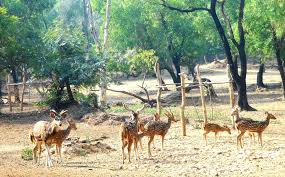
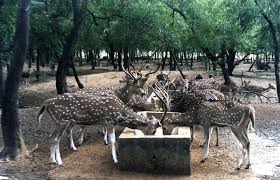
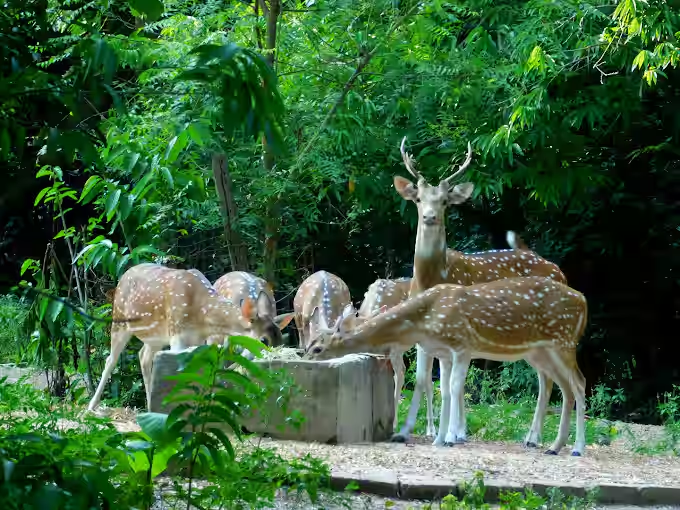
7. Nearby attractions
Combine your visit to Ballavpur with these must-see cultural and natural attractions:
- Visva-Bharati University: Founded by Rabindranath Tagore, this UNESCO World Heritage Site embodies his philosophy of learning amidst nature.
- Sonajhuri Haat: The famous weekend fair featuring Baul music, crafts, tribal art, and local cuisine under the shade of mahua trees.
- Amar Kutir: A handicraft cooperative established during the independence movement — known for leather, batik, and bamboo work.
- Kala Bhavana: Santiniketan’s art school, home to sculptures and murals by legendary artists like Nandalal Bose and Ramkinkar Baij.
8. Where to stay – The Pearl Club Resort, Santiniketan
For travelers seeking the perfect blend of luxury and tranquility near Ballavpur Wildlife Sanctuary, The Pearl Club Resort, Santiniketan stands out as an exceptional choice. Just a short drive from the sanctuary, the resort offers a serene retreat surrounded by lush greenery and the artistic soul of Santiniketan.
Designed to reflect the harmony of nature and culture, The Pearl Club Resort combines modern comfort with local aesthetics. Guests can stay in spacious villas, enjoy curated dining experiences, or simply unwind by the pool under the open Bolpur sky. Every corner of the resort — from its landscaped gardens to art-inspired interiors — echoes the charm of Tagore’s Santiniketan.

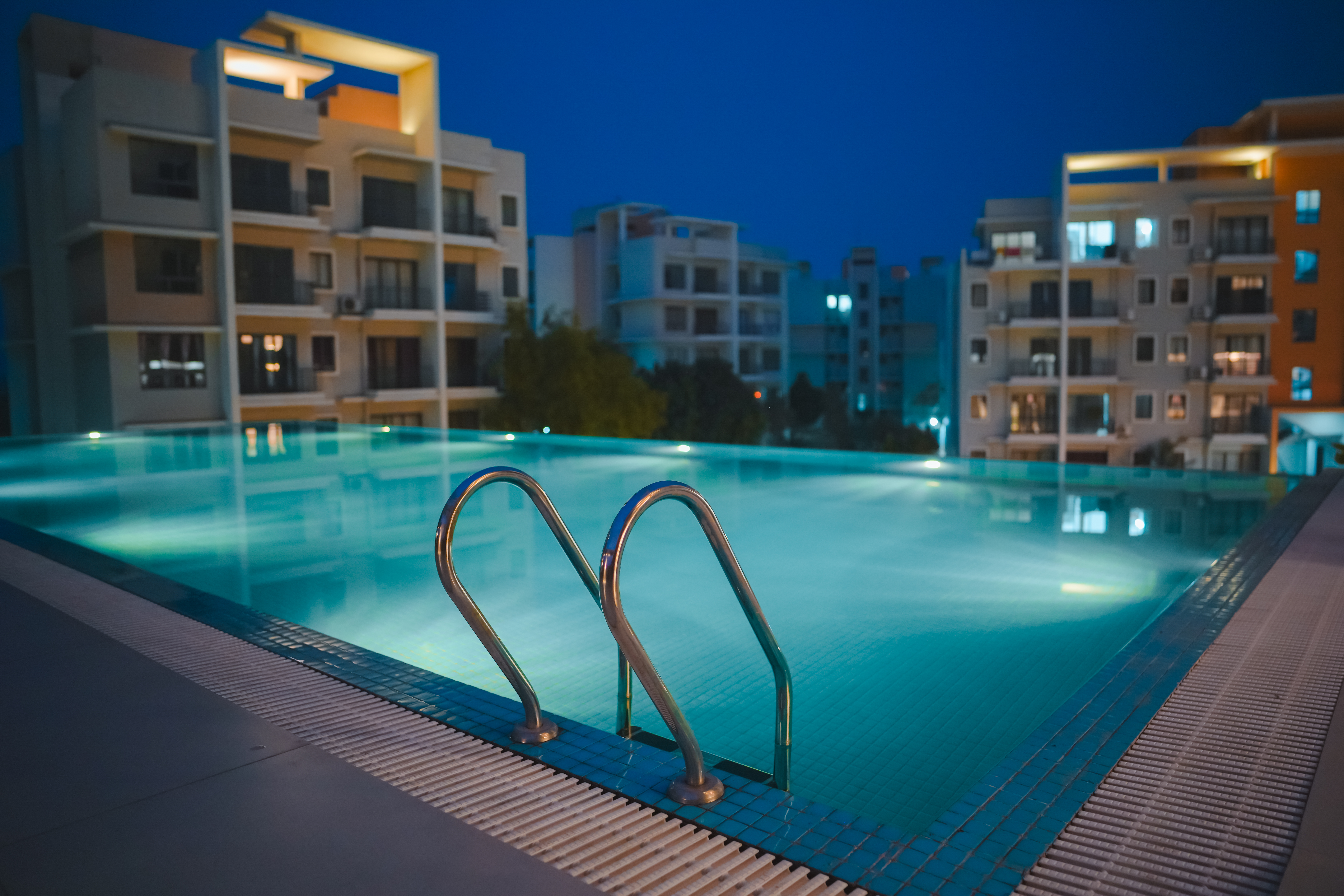
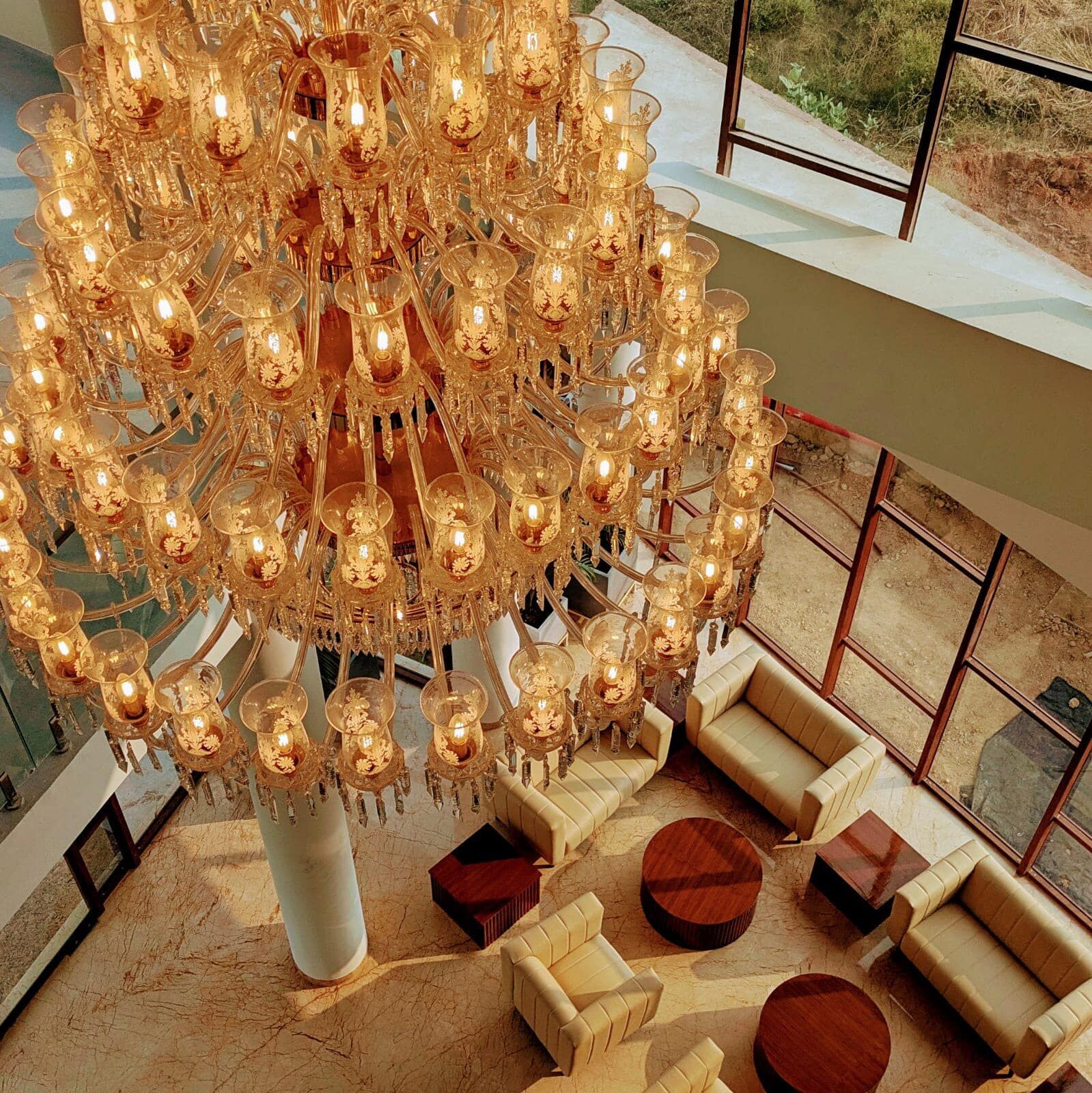
Guests can indulge in authentic local cuisine, attend Baul music evenings, or take guided nature walks that explore both the Ballavpur Wildlife Sanctuary and the nearby Sonajhuri forest trails. Whether you’re visiting for a peaceful weekend, a family vacation, or a romantic escape, The Pearl Club Resort promises an experience of comfort, culture, and calm.
The resort’s proximity to Santiniketan’s key attractions — Visva-Bharati University, Kala Bhavana, and Sonajhuri Haat — makes it a convenient base for exploring the region. With warm hospitality, personalized service, and a deep respect for the local heritage, it embodies the true spirit of Santiniketan luxury.
9. Visitor tips
Carry water, wear light cotton clothing, and use comfortable walking shoes. Binoculars are a must for birdwatchers. Refrain from feeding animals or playing loud music — the beauty of Ballavpur lies in its silence. Early morning and post-rain visits offer the most captivating views of deer and peacocks.
10. Responsible travel
Help preserve Santiniketan’s natural beauty by avoiding plastic and litter. Support local artisans by shopping at Sonajhuri Haat or Amar Kutir. Respect the forest’s tranquility — remember, you’re entering the home of many living beings. Your mindful visit contributes to sustainable tourism in Santiniketan.
11. Why it will stay with you
A visit to Ballavpur Wildlife Sanctuary is more than just a trip — it’s a soulful experience. The serene rustle of sal leaves, the rhythmic call of birds, and the distant echo of Baul songs blend into a timeless melody. It captures what Santiniketan stands for — a sanctuary of nature, culture, and creativity living in harmony.
12. Plan your trip
Nearest rail: Bolpur Shantiniketan (3 km)
Nearest airport: Durgapur (60 km), Kolkata (180 km)
Best months: October – February
Timings: 7 AM – 5 PM (approx.)
Entry fee: Nominal per person (subject to change)
Watch this short video capturing the serene beauty of Ballavpur Wildlife Sanctuary:
Traveler’s Checklist
A little preparation makes your visit smooth and enjoyable. Carry light cotton clothes in summer or a warm jacket during winter mornings. Don’t forget binoculars, a camera, and a refillable water bottle. Comfortable walking shoes are a must for exploring forest trails. Also, pack sunscreen, a hat, and insect repellent if you plan to stay longer. Avoid plastic packaging and maintain cleanliness to help preserve the sanctuary’s ecosystem.
The Sanctuary in Different Seasons
Each season gives Ballavpur a new identity. Winter (Nov–Feb) brings migratory birds and crisp air — perfect for photography. Spring (Mar–Apr) paints the sal forest in hues of green, while monsoon (Jul–Sep) makes the landscape lush and fresh, ideal for nature walks. Summer (May–Jun) is warmer but less crowded, offering quiet solitude and good chances to spot deer at waterholes.
Eco-Conservation Efforts
Managed by the West Bengal Forest Department, Ballavpur Wildlife Sanctuary focuses on preserving Bengal’s dry deciduous forest ecosystem. Regular plantation drives, lake conservation, and animal healthcare programs ensure a balanced habitat for deer, peacocks, and migratory birds. Visitors can support this mission by maintaining silence, avoiding littering, and spreading awareness about sustainable tourism in Santiniketan.
Nearby Experiences and Nature Spots
The sanctuary is surrounded by scenic and cultural attractions. Just a few kilometers away lies the Kopai River, famous for its tranquil banks and red laterite soil described in Tagore’s poetry. Visit Kala Bhavana to witness Santiniketan’s art legacy, or enjoy the rustic charm of Sonajhuri Forest and its weekend haat. You can also take a short drive to Kankalitala Temple, one of Bengal’s sacred Shakti Peethas.
A Peaceful Retreat for Mind and Soul
Beyond its wildlife, Ballavpur is a place of quiet reflection. Many visitors find it therapeutic — walking under rustling sal leaves, listening to bird calls, and breathing fresh air far from city life. The peaceful atmosphere makes it a favorite for meditation, reading, or simply spending time with loved ones amidst nature. It’s a living reminder of Santiniketan’s philosophy — where nature, art, and humanity coexist in perfect harmony.
